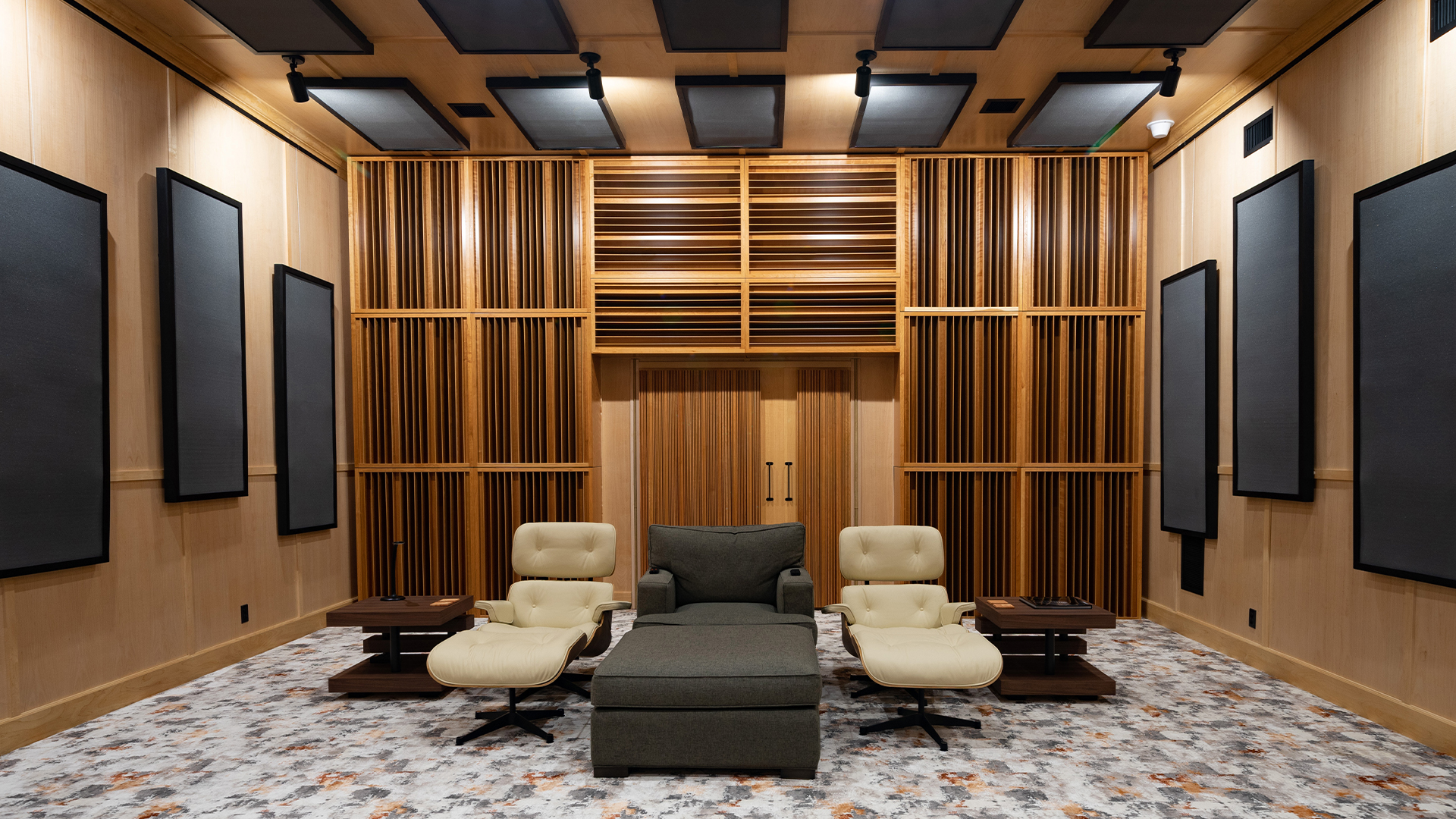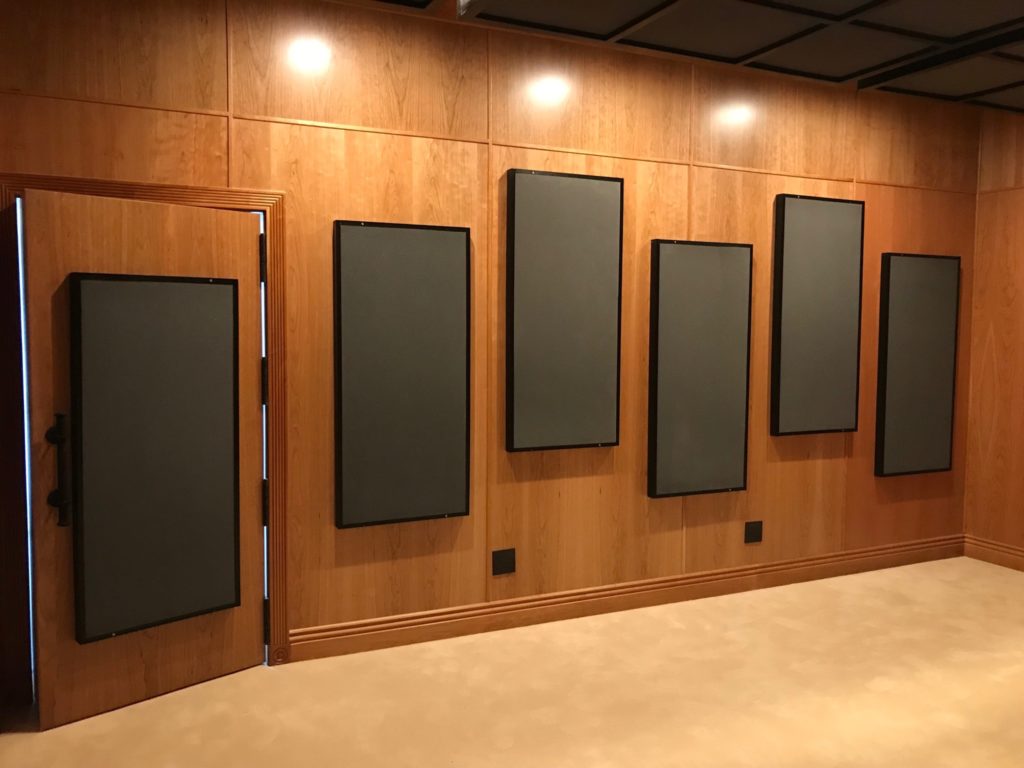
What is an acoustic baffle? Let’s go to the dictionary for a start point. https://en.wikipedia.org/wiki/Sound_baffle. Let’s break the definition down into its parts. Here is the net dictionary response to what is an acoustic baffle.
A sound baffle is a construction or device which reduces the strength of airborne sound. Sound baffles are a fundamental tool of noise mitigation, the practice of minimizing noise pollution or reverberation.
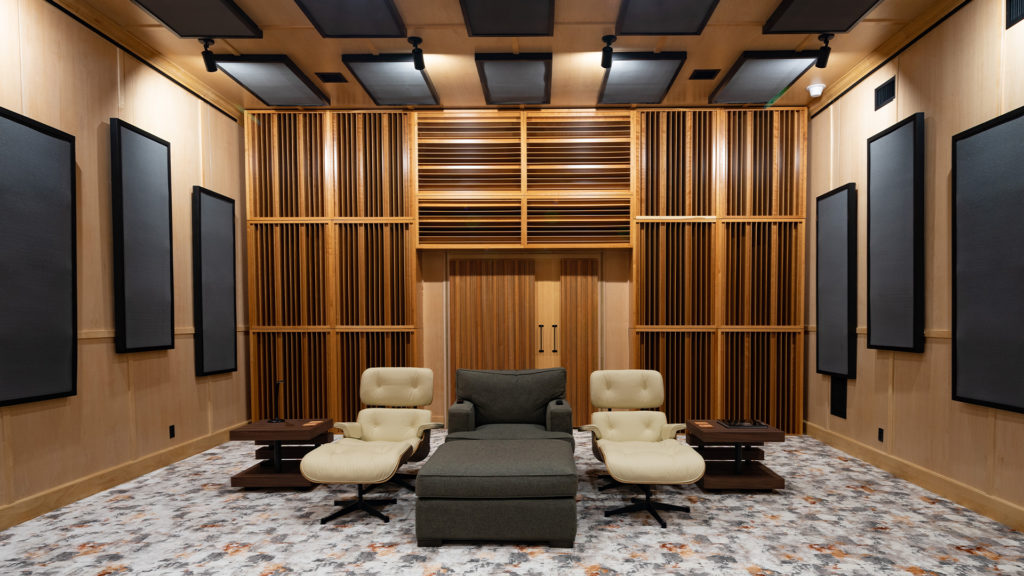
In acoustics, any device that reduces the strength or amplitude of a signal is a sound absorption device. In acoustics, we have two main technologies that we work with. We have absorption and diffusion. Absorption reduces the strength of a signal through the absorption process. Diffusion is a technology that deals with reflections. They do not work by using absorption so there are no reductions in the strength or amplitude of the signal. Diffusion is not a technology according to the definition that reduces the strength of a signal. It spreads out reflections from surface areas. Let’s look at another definition found on the net to the question: what is an acoustic baffle.
Here is another definition of an acoustic baffle. Acoustic baffles are free hanging sound absorption products that are often used to acoustically treat large rooms such as gymnasiums and lobbies. With this definition, they are reserved to gymnasiums and lobbies. With this definition you must have a gymnasium or a lobby. Are any other usages covered? Can you use a baffle in a smaller room? How does an acoustic baffle work? With all of these confusing definitions, let’s define what an acoustic baffle really is. We can see from the two examples, that sound absorption is a major component of both definitions. https://www.britannica.com/technology/baffle-acoustics
In acoustics, we have two main categories that we must look at when it comes to using absorption. We have energy within the room that can be treated with either diffusion or absorption. Absorption reduces the amplitude or strength of the energy. We have low, middle, and high frequency absorption. Low-frequency absorption requires a different technology type than middle and high frequency energy. You must match the problem with the solution that works for each frequency range.
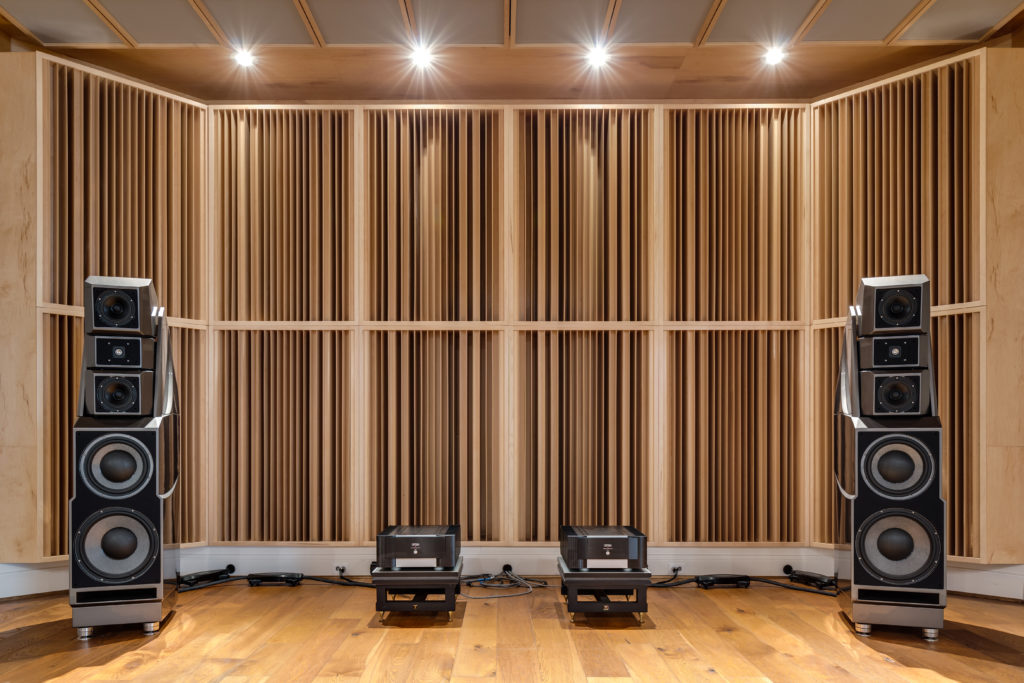
Diffusion takes reflected energy and reduces the impact of those reflections. This process minimizes the impact of reflections, so that our hearing mechanisms can not “lock in” on a larger reflection which is what it is designed to do. When our hearing systems focus on larger reflections, It is trying to locate distance. The process is called spatial localization. Our hearing system is trying to locate how far away the room boundary surfaces are. https://www.acousticfields.com/product/qda-13-m-modular-diffuser-absorber/
With all of the net nonsense regarding the definition, we can safely look at sound absorption as the main component. An acoustic baffle is a sound absorption technology. It is designed to absorb energy to reduce the strength of that energy. When we look at absorption, we have two main technologies that are used which are based upon the frequency of the sound. Low frequency energy is wave energy. Waves of low frequency energy are tall and wide. You can think of this energy as ocean waves. The middle and high frequency energy is termed ray energy. Middle and high frequency energy is shorter in length and is responsible for reflections in our rooms. Lower frequency wave energy is pressure based.
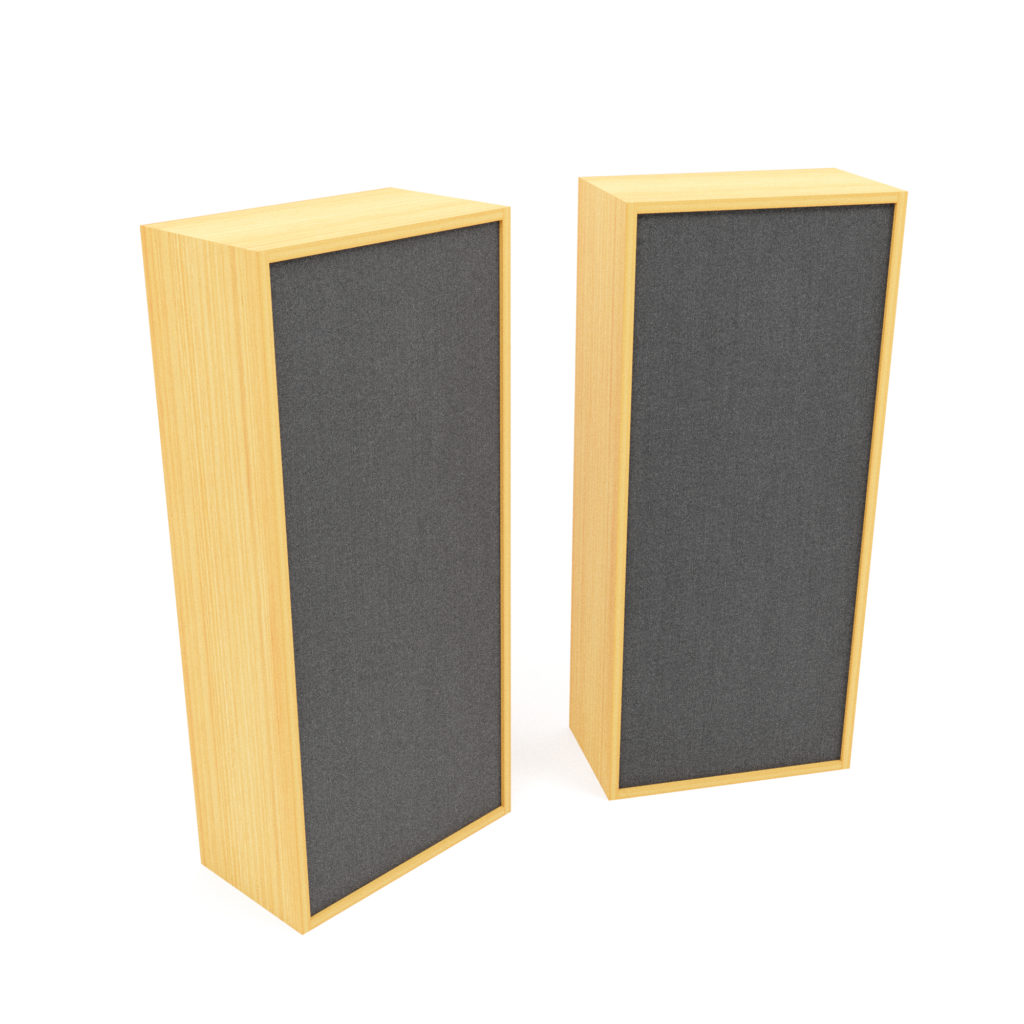
Treating energy with acoustic baffles, you must take into consideration the form of energy you are dealing with. Wave or low frequency energy is absorbed using three processes that are based upon low-frequency pressure. https://www.acousticfields.com/product/acda-10-studio/ We have diaphragmatic, membrane, and Helmholtz. Diaphragmatic is the most powerful of the three and is the technology we use at Acoustic Fields www.acousticfields.com. Membrane is the cousin of diaphragmatic. It is lighter in weight and smaller in performance than the diaphragmatic technology. A Helmholtz absorber is a frequency specific absorber that is used to fine tune for frequencies that a membrane and a diaphragmatic may not achieve. You must choose the correct type of acoustic baffle to use that will absorb the energy of your frequency and amplitude issues.


